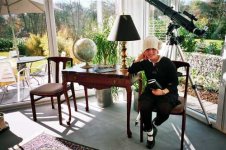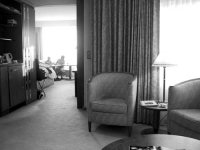Sparrow said:
Why would you meter Roger, you must surely know that is inaccurate, guesswork I understand, the best results are based on experience, I have been lead to believe?
You may be advised to contemplate the difference between the definite and the indefinite article, you may then understand that there is a significant difference between “the” and “my” gymnastics, perhaps?
In future please do not quote me out of context or make assumptions on my part to a third party and I will, in exchange, extend the same courtesy to you.
With regards, and good evening
Dear Stewart,
Your grammar is so frequently splenetic that if I do not understand it on a couple of readings, I no longer bother to try to interpret it. You are letting anger get in the way of clear thought. I had no intention of quoting you out of context; I do not know where you think I did so; but if I did, I apologize.
I also apologize for the length of the post, though I have attempted to include a little new information as well as reiterating the basics and questioning your arguments.
Now: experience.
Part of the skill of metering is knowing where to meter. With a spot meter and negative film, as I have repeated ad nausueam, this is normally the darkest area in which you want detail, though you can of course key exposure anywhere you like: in movies, a favourite key tone is the highlight on the star's face.
Knowing where to meter is mostly a question of simple understanding, though experience also plays a part: you may decide to let unimportant shadows block, or you may use blocked shadows as an aesthetic element. Also -- an interesting fact I learned from a master (photomechanical) printer -- if two shadows look about equal in a scene, the one that is nearer the ground will usually be darker.
Another part of the skill of metering, especially when using anything other than a spot meter, is knowing how to interpret the results: experience again.
You have still to give a straight answer to whether you know how ISO film speed standards are defined. If you persist in denying that negative speeds are keyed to minimum density on the negative, and transparency speeds to brightest highlights in the transparency (minimum density again, of course), we shall all be forced to assume that you do not.
Then there's the question of the half stop versus 1/25 stop (difference in reflectivity between 13% and 16%). Let's assume it was a stupid mistake; we all make them. In that case, the decent thing would have been to admit it.
Next come your inexplicable assertions about blocking shadows and blowing highlights equally, by meterig a mid tone. The latitude of negative film -- great for overexposure, slight for underexposure -- makes a nonsense of that, too.
There is no polite way of saying it. A lot of the time, you simply do not appear to know what you are talking about, and you are excessively willing to resort to personal insult and general mounting of a high horse in an attempt to disguise the fact.
So let's try a little test, with anger aside:
1 Do you deny that experience plays an essential part in exposure determination, whether you are metering or not?
2 Do you agree that ISO film speeds are determined as described above?
3 Why did you fail to acknowledge your howler about 1/25 stop?
4 Do you accept that in the nature of film latitude, there is greater tolerance of overexposure than of underexposure?
5 Do you sincerely believe what you said in the post above, that you do not believe that I ever use meters, or at least, that I would not meter the shot in question?
I have no intention of denigrating your ability as a photographer. That was a very fine picture, and one I would have been proud to take. But I do query, with some force, whether you have much grasp of fundamental exposure theory. As far as i can see, you are in fact living proof of the truth that you do not need to understand exposure theory in order to take good pictures.
Throughout this thread, I have been trying to lay out some basic and verifiable fundamentals of exposure theory, and to counter some common misconceptions. If this is seen as 'willy waving', I don't really care: I want to help people understand, if they are interested in exposure theory. What has kept you in thread?
Roger











